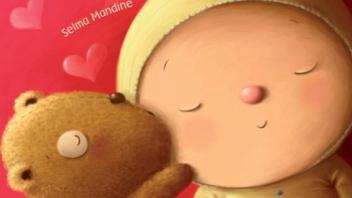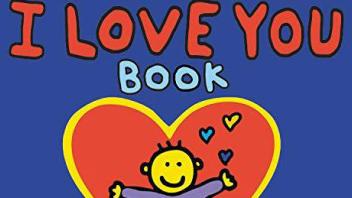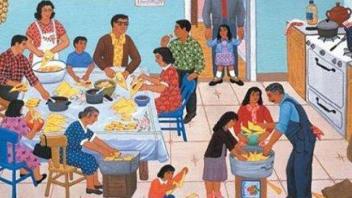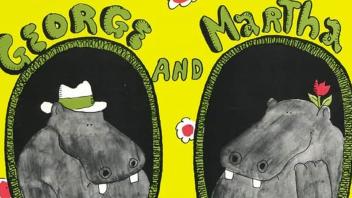Heartfelt poetry with author Laura Elliott
Meet Laura Elliott, author of A String of Hearts and many more books for children and teens.
In the video clips below, Laura shares the history of Valentine’s Day, shows you how to make four different kinds of Valentine’s Day cards (each dedicated to one of her beloved pets!), and talks about the different kinds of writing you can experiment with while creating beautiful homemade cards.
How to make a pocket heart valentine
Here’s a simple valentine to make at home or school. All you need is colorful paper, scissors, tape or stickers, and the pocket heart template we provide. Once you’ve made your pocket, you can add Valentine’s Day coupons, poetry, an acrostic, a lollipop — or any other surprises that say “I love you.” Download instructions ›
Simple writing prompts for Valentine’s Day
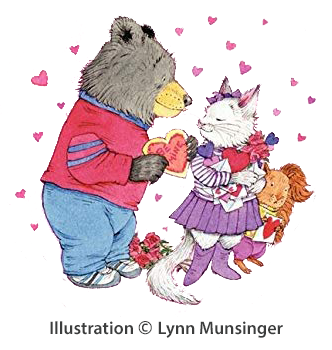
Valentine’s Day word walls
Create a word wall for your Valentine’s Day writing prompts. Ask your students to brainstorm all the valentine-related nouns and adjectives they can think of — love, friendship, family, friends, hearts, happiness, kindness, Cupid, bow and arrow, roses, flowers, chocolate, hugs, kisses, letters, pink, red … and more!
Young children with emerging writing skills can participate in Valentine’s Day writing activities. Here are a few ideas to inspire even the beginning writer:
- Create a Valentine’s Day coupon book for a family member or friend, full of simple things you will do to show your love and friendship.
- Write a letter to your Mom, Dad, grandparent, brother, or sister telling them why you love them.
- Describe a time when you felt especially loved.
- Write an acrostic poem using a word like MOM, FRIEND, LOVE, or VALENTINE. Try this interactive acrostic learning tool from ReadWriteThink.
Poetry: sijo, cinquain, haiku, and rhymes
Valentine’s Day is a great time to practice poetry writing skills and experiment with a new form. There are lots of different kinds of poetry forms, including rhyming poems, limericks, free verse, cinquain, haiku, and sijo.
Sijo

Sijo (pronounced see-zhoo), is an ancient Korean verse form similar to haiku but with a different structure — and a distinctive witty twist at the end. Linda Sue Park’s book Tap Dancing on the Roof is a lively introduction to sijo. The structure for sijo is simple: three lines, 14-16 syllables in each line. What makes it complex and joyful: careful word choice, visual imagery, play on words, metaphor, and humor. Here’s an example from Park’s book:
More about sijo
- Tap Dancing on the Roof by Linda Sue Park
- Monday Poetry Stretch: Sijo
Cinquain
Cinquain (pronounced sin-cane) is a non-rhyming five-line poem that focuses on imagery and the natural world. The form has old roots — all the way back to medieval France! The structure for a cinquain looks like this:
- Line 1: One word title, a noun that identifies your topic
- Line 2: Two adjectives that describe your topic
- Line 3: Three “ing” verbs that describe action
- Line 4: A phrase that describes something about your topic
- Line 5: A noun that is a synonym or another way to name your topic
More about cinquain poems
Haiku
Haiku is a traditional form of Japanese poetry. Each poem has just 3 lines: the first and last lines have 5 syllables and the middle line has 7 syllables. Haiku usually does not rhyme. Here’s an example written by a child:
More about haiku
Funny, rhyming poems
Jack Prelutsky, the first U.S. Children’s Poet Laureate, is the master of humorous poetry for children. Prelutsky recommends “Word Warm-Ups” before you begin writing. Here are three exercises to try:
- Word Play: Pick a word, any word, and think of all the words that rhyme with that word. Try first with one-syllable words, and then with words of two or more syllables.
- Object Observations: Pick an object — a pencil, a brick wall, a clock, a tomato — anything. Then write down everything you notice about that object.
- Synonym Silliness: Think of an adjective, such as happy, soft, tall, or sleepy. Then write down all the words you can think of that have the same meaning as that adjective. This list will help a lot when you’re trying to describe things.
Try this activity: Jack Prelutsky’s Fun with Poetry
Idioms, simile, metaphor, and alliteration
When you describe something by comparing it with something else, you are using figurative language. Figurative language goes beyond the literal meaning of words to create a fresh way of looking at an idea or a subject. Poetry is rooted in figurative language. Four common examples are simile, metaphor, alliteration, and idioms.
Playing with idioms
Explore the meanings of English idioms that focus on a Valentine’s Day theme word. You can use one of these expressions as part of the message on your homemade card. Here’s a sample list with the word “heart” to get kids thinking:
- “To have a heart of gold” means to care about other people.
- “To have a big heart” means to be giving and caring.
- “To wear your heart on your sleeve” means you let everyone know how you feel about someone.
- “From the bottom of your heart” means that you are doing or saying something with genuine emotion and feeling.
- “To have a change of heart” is to change your mind.
- “To have your heart set on something” means you really want something.
- “To be soft hearted” is to be sympathetic.
Students can brainstorm what each idiom sounds like it means, then pair up to research the meaning, write a sentence using the idiom, and create a drawing. Turn it into a game by having the rest of the students guess what each idiom really means!
More about idioms
Simile and metaphor
A simile is a figure of speech that compares two unlike things, usually with the words “like” or “as.” Example: Love is like an ocean rolling over me.
A metaphor is a figure of speech that compares two relatively unlike things using a form of the verb “be.” A metaphor can be more subtle than a simile. Example: Love is a tree with many branches.
Here’s an example of student writing using figurative language:
Alliteration
Alliteration uses the sound in the first syllables of a series of words and/or phrases. Alliteration is used to create rhythm, establish a mood, and call attention to important words as well as similarities and contrasts. Example: Love lightly leaps.
More resources on writing poetry
Children’s books for Valentine’s Day
Browse our booklists featuring stories about families, friendship, what love looks like, and what love means — carefully selected by Maria Salvadore, our children’s literature expert.
Themed Booklist
Love Is in the Air
Themed Booklist
Twelve Books That Say “I Love You”
Themed Booklist
Expressions of Love
Themed Booklist
Friends & Family
Themed Booklist

